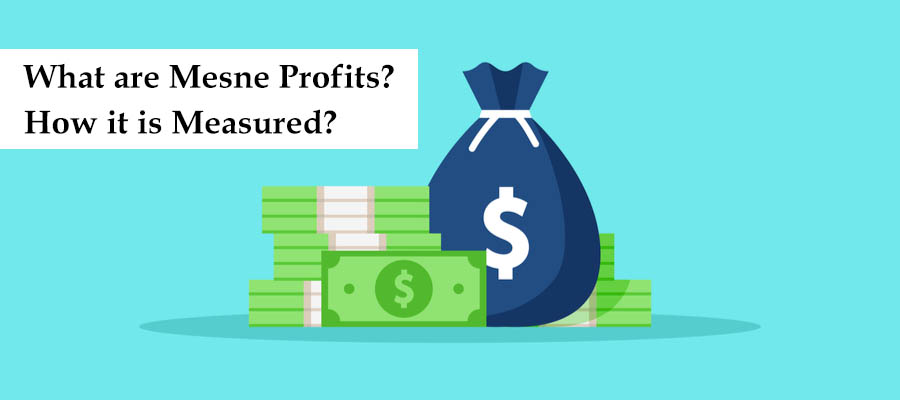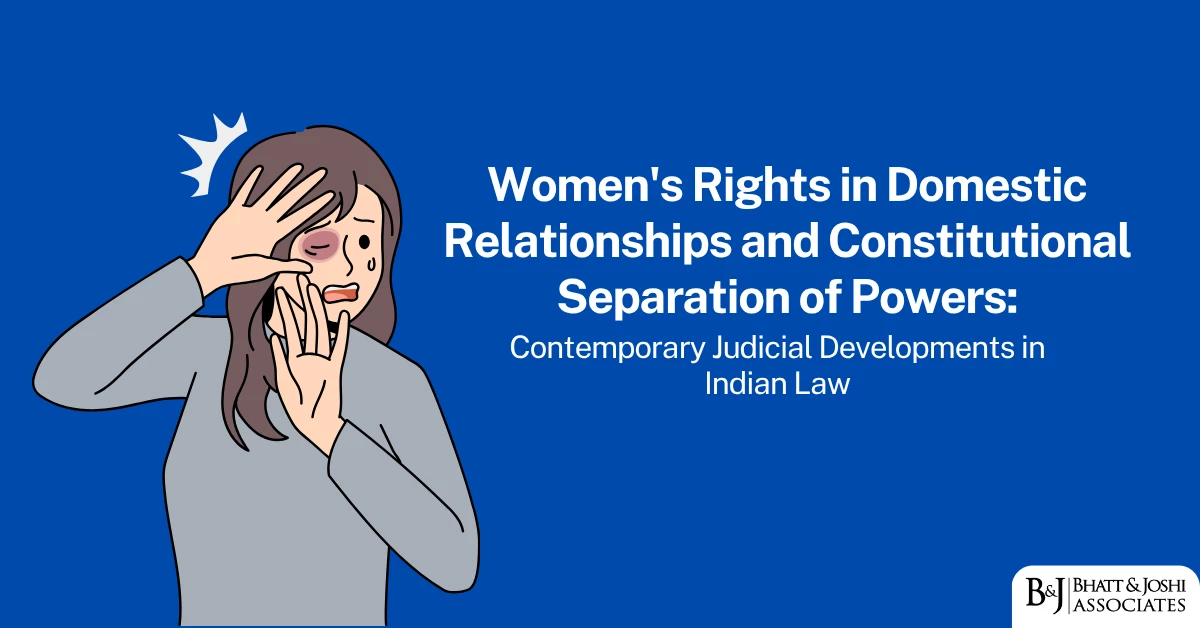Introduction
The fundamental principle upon which the Code of Civil Procedure, 1908 operates is “ubi jus ibi remedium,” meaning that where there is a right, there is a remedy. The idea of mesne profits arises from this principle as it is natural law to provide compensation when a legal right has been violated or breached. Before delving into the concept of mesne profit, it is important to define the terms “ownership” and “possession.” Ownership refers to an individual’s exclusive collective right to possess, enjoy, transmit, or destroy a property they own, while possession serves as initial evidence of ownership. The law protects the right to possess property unless someone else claims to have a better title. In such cases, the law acts as a shield to safeguard the original owner’s rights and ensure compensation from the unlawful possessor. Mesne profits serve as a means of compensation, granting a remedy to the injured party by preventing the wrongful possessor from deriving profits from the property. This article aims to clarify the concept of mesne profits as governed by the Code of Civil Procedure, 1908.

Meaning and scope
Section 2 (12) of CPC, 1908 defines and states that, “mesne profits” of property means those profits which the person in wrongful possession of such property actually received or might with ordinary diligence have received therefrom, together with interest on such profits, but shall not include profits due to improvements made by the person in wrongful possession.
Mesne profits are relevant in cases where there has been an unlawful occupation or wrongful possession of property by someone who is not the rightful owner. When a person wrongfully occupies, the owner is not only entitled to restoration on the property by way of a suit to recover possession but also damages for wrongful possession, in such cases the court may award mesne profits to the rightful owner. Mesne profits can be claimed against a trespasser, or against a mortgagor after a decree for foreclosure or redemption has been passed against him, or against a tenant holding the property even after being served a notice to quit, or against a person against whom a decree of possession had passed.
For ascertaining mesne profits, the test is not what the plaintiff has lost but what the defendant has or might have gained reasonably with ordinary diligence by such wrongful possession. The amount of mesne profits awarded by the court is usually determined based on various factors such as the market value of the property, the period of wrongful possession, and any other relevant circumstances. The court may consider evidence presented by both parties to determine a fair amount of mesne profits to be awarded.
Judicial Standpoint
For calculation of mesne profits there is no fixed rule and each case has to be assessed. Calcutta High Court in the case of Casyab Pvt. Ltd. v. Central Bank of India while expanding on the above notion has stated that, “However, in assessing the mesne profits, in absence of definite and conclusive evidence, some guesswork may be applied on the basis of the available materials and the evidence on record in finally determining the mesne profits. There exists hardly any uniform and standard pattern of assessment in this regard. A comparative assessment of the nature, location, accessibility to the main road, facility, age, condition, etc., of the suit premises on the one hand and similar characteristics of the premises in the surrounding area on the other hand, would be a relevant factor in assessing the mesne profit.”
Further, for the grant of mesne profit the plaintiff has to provide evidence to the court to support their claim and should pray and plead explicitly in the plaint, in absence of the above the courts can’t award mesne profit to the parties. Supreme Court in the case of Ganapati Madhav Sawant (Dead) through his Lrs. v. Dattur Madhav Sawant expanded on this in relation to Order XX Rule 12. Order XX Rule 12 provides that where a suit is for the recovery of possession of immovable property and for rent or mesne profits, the court may pass a decree directing an inquiry as to rent or mesne profits. However, this power is not discretionary and can only be exercised by the court when the plaintiff prays and pleads for the same in the suit. In the above case court observed the same, “the plaintiff had not prayed for an inquiry relating to mesne profit in terms of Order XX Rule 12 CPC and in the absence of any specific prayer for any inquiry into that aspect, the same could not have been granted.”
As stated above for claiming of mesne profits to be successful evidence has to be provided, on bases of which the court may determine if mesne profit should be awarded. As already mentioned there is no fixed or uniform criteria for assessment of the amount of mesne profits but to support or reject the claim and for assessment, parties have to provide evidence, even if they are not conclusive in nature. In the case of Ramakka v. Nagesam, Madras High Court contended that the burden of proof is upon the plaintiff and such that the plaintiff has to adduce evidence in this respect. If the plaintiffs adduce no evidence to show the same, it is impossible for the Court to determine the amount and the claim fails due to absence of evidence.
Further, as regards to want of evidence, the burden of proof and the onus of proof on parties has to be determined. The burden of proof, as a matter of law, in an application for ascertaining mesne profits, lies on the plaintiff who asserts that he is entitled to mesne profits. But the onus shifts from one party to the other depending upon the weight of evidence adduced. As a result the onus of proof shifts depending upon presumptions and the evidence adduced either direct or circumstantial. The onus of proving the amounts actually received lies on the defendant as that matter is within his peculiar knowledge. If both parties have adduced evidence, the Court ascertains profits on the basis of those.
Conclusion
Mesne profits can be awarded to plaintiff against defendant by the court successfully when the plaintiff prays and pleads for the same in the suit and adduce evidence to support such claim. Evidence is provided firstly, to prove the wrongful possession and then for determination of the mesne profit, specifically for ascertaining the amount of mesne profit. As for the defendant, he can adduce evidence to reject the claim or such which are in accordance with Section 106, Evidence Act. In case of uncertainty plaintiff can plead and pray to court for inquiry on mesne profit and on bases of that court will calculate and award mesne profits.
Frequently Asked Questions
1. What is the meaning of mesne profits?
Mesne profits refer to the profits or benefits that a person unlawfully in possession of a property gains during the period of wrongful occupation. It is compensation awarded to the rightful owner for the loss suffered due to the illegal occupation.
2. What is mesne profit in tort?
In tort law, mesne profits are a type of damages awarded when someone unlawfully occupies another’s property. The wrongful possessor must compensate the rightful owner for the loss of income or benefits that could have been earned from the property.
3. What is a mesne in law?
The word “mesne” (pronounced as “mean”) in law refers to something intermediate or middle. In legal terms, mesne profits represent the earnings gained by an unlawful occupier before returning the property to its rightful owner.
4. मेसने इन लॉ क्या है?
मेसने (Mesne) का अर्थ कानून में मध्यवर्ती या अस्थायी होता है। मेसने लाभ उस संपत्ति से प्राप्त लाभ होता है जिसे किसी अन्य व्यक्ति ने अवैध रूप से कब्जा कर रखा हो।
5. मेसने लाभ का क्रम 20 नियम 12 क्या है?
सिविल प्रक्रिया संहिता (CPC) के आदेश 20, नियम 12 में मेसने लाभ से संबंधित प्रावधान हैं। यह न्यायालय को अधिकार देता है कि वह कब्जा करने वाले व्यक्ति को अवैध रूप से प्राप्त मुनाफे को वास्तविक मालिक को चुकाने का आदेश दे।
. Under which provision of CPC can mesne profits be claimed?
Mesne profits can be claimed under Order 20 Rule 12 of the Civil Procedure Code (CPC), 1908.
7. What is the difference between rent and mesne profits?
- Rent is paid by a lawful tenant as per an agreement.
- Mesne profits are awarded as compensation for unlawful possession.
8. How is mesne profit calculated?
Mesne profits are calculated based on:
- Market rental value of the property
- Any actual income derived from the property
- Compensation for damage or loss to the rightful owner
9. Can mesne profits be claimed retrospectively?
Yes, a rightful owner can claim mesne profits from the date of unlawful possession until possession is restored.
10. Can mesne profits include interest?
Yes, courts often grant interest on mesne profits at a reasonable rate to compensate for delayed payments.
11. Who determines the mesne profits amount?
The court determines mesne profits based on evidence, property value, and loss suffered by the owner.
12. Can mesne profits be claimed in partition suits?
Yes, in partition suits, a co-owner in unlawful possession may be ordered to pay mesne profits to other co-owners.
13. Can mesne profits be awarded in eviction cases?
Yes, landlords can claim mesne profits from tenants who refuse to vacate even after lease termination.
14. Is mesne profit taxable?
Yes, mesne profits are generally considered income and may be subject to taxation under the Income Tax Act.
15. What is the limitation period for claiming mesne profits?
The limitation period is three years from the date when the rightful owner’s claim arises.











